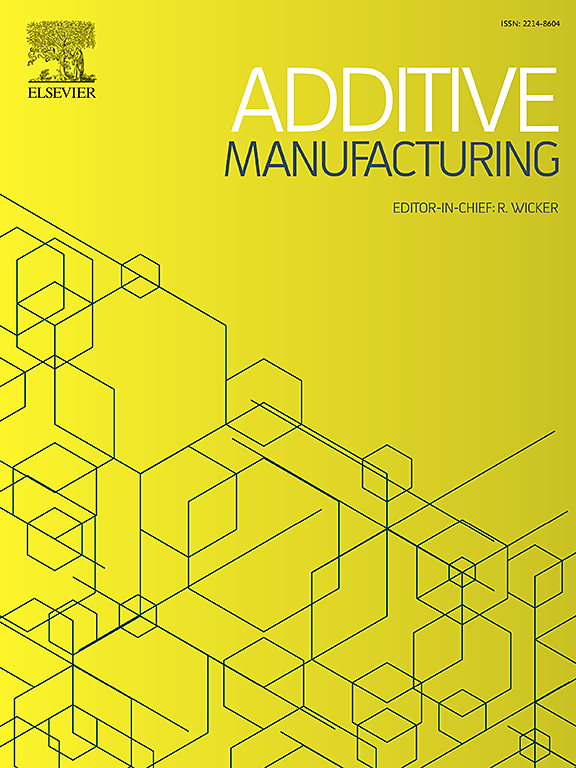A novel three-dimensional profile prediction method integrated with particle acceleration simulation and layer stacking in cold spray additive manufacturing
IF 10.3
1区 工程技术
Q1 ENGINEERING, MANUFACTURING
引用次数: 0
Abstract
In cold spray additive manufacturing (CSAM), predicting the deposit profile is a critical prerequisite for subsequent path planning. Unlike other additive manufacturing (AM) technologies, which achieve high single-track resolution through precise energy input, CSAM still faces challenges in shape control. While some previous models can predict thin coatings, they are unsuitable for complete CSAM workpieces or cold spray (CS) repairing of irregular damaged zones. Therefore, we proposed a new combined 3D method based on the particle acceleration simulation and the layer stacking principle, taking critical velocity (vcr) as the regulation of deposition efficiency (DE) into consideration. The predicted profile is deduced by the integral equation containing various process parameters, namely particle distribution, particle height, nozzle traversing speed and the number of stacking layers. The effects of different influencing factors on deposit profile during CSAM were investigated, including nozzle cross-section shape, spray angle, standoff distance, nozzle traversing speed and scanning step. Results show that this new method overcomes the limitations of spatially symmetric particle distribution and adds up the critical velocity criterion (CVC) to ground the simulation in virtue of solid physical principle. It provides real-time profile prediction feedback for nozzle path planning within a short time, offering a visual reference for complex spraying scenarios without requiring pre-experiments.
冷喷涂增材制造中粒子加速模拟与层叠加相结合的三维轮廓预测方法
在冷喷涂增材制造(CSAM)中,预测沉积剖面是后续路径规划的关键先决条件。与其他增材制造(AM)技术不同,CSAM技术通过精确的能量输入实现高单轨迹分辨率,但在形状控制方面仍面临挑战。虽然以前的一些模型可以预测薄涂层,但它们不适合完整的CSAM工件或不规则损伤区域的冷喷涂修复。因此,我们提出了一种基于粒子加速模拟和层叠加原理的三维组合方法,考虑临界速度(vcr)作为沉积效率(DE)的调节。通过包含颗粒分布、颗粒高度、喷嘴穿越速度和堆积层数等工艺参数的积分方程,推导出预测剖面。研究了喷嘴截面形状、喷射角度、间隔距离、喷嘴穿越速度和扫描步长等因素对CSAM过程中沉积剖面的影响。结果表明,该方法克服了粒子空间对称分布的局限性,并结合固体物理原理,将临界速度准则(CVC)加到模拟中。为短时间内的喷嘴路径规划提供实时轮廓预测反馈,无需预实验即可为复杂的喷涂场景提供视觉参考。
本文章由计算机程序翻译,如有差异,请以英文原文为准。
求助全文
约1分钟内获得全文
求助全文
来源期刊

Additive manufacturing
Materials Science-General Materials Science
CiteScore
19.80
自引率
12.70%
发文量
648
审稿时长
35 days
期刊介绍:
Additive Manufacturing stands as a peer-reviewed journal dedicated to delivering high-quality research papers and reviews in the field of additive manufacturing, serving both academia and industry leaders. The journal's objective is to recognize the innovative essence of additive manufacturing and its diverse applications, providing a comprehensive overview of current developments and future prospects.
The transformative potential of additive manufacturing technologies in product design and manufacturing is poised to disrupt traditional approaches. In response to this paradigm shift, a distinctive and comprehensive publication outlet was essential. Additive Manufacturing fulfills this need, offering a platform for engineers, materials scientists, and practitioners across academia and various industries to document and share innovations in these evolving technologies.
 求助内容:
求助内容: 应助结果提醒方式:
应助结果提醒方式:


